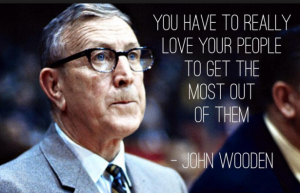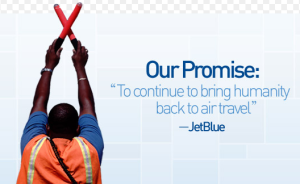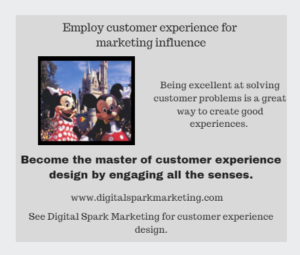I have many leadership lessons learned in my years in the military (6 years) and business (35 years). Being a good leader is a lifelong learning process. You are never done learning. Every good leader always looks for ways to improve the ability to improve their leadership qualities and attributes. Lessons learned are a great source of learning.

Before I tell you what I have learned about leadership, let me first tell you a story. It is a story about a scorpion and a frog.
Once upon a time a scorpion looked around at the mountain where he lived and decided that he wanted a change. So he set out on a journey through the forests and hills. He climbed over rocks and under vines and kept going until he reached a river.
The river was wide and swift, and the scorpion stopped to reconsider the situation. He couldn’t see any way across. So he ran upriver and then checked downriver, all the while thinking that he might have to turn back.
Suddenly, he saw a frog sitting in the rushes by the bank of the stream on the other side of the river. He decided to ask the frog for help getting across the stream.
“Hellooo Mr. Frog!” called the scorpion across the water, “Would you be so kind as to give me a ride on your back across the river?”
“Well now, Mr. Scorpion! How do I know that if I try to help you, you won’t try to kill me?” asked the frog hesitantly.
“Because,” the scorpion replied, “If I try to kill you, then I would die too, for you see I cannot swim!”
Now this seemed to make sense to the frog. But he asked. “What about when I get close to the bank? You could still try to kill me and get back to the shore!”
“This is true,” agreed the scorpion, “But then I wouldn’t be able to get to the other side of the river!”
“Alright then…how do I know you won’t just wait till we get to the other side and THEN kill me?” said the frog.
“Ahh…,” crooned the scorpion, “Because you see, once you’ve taken me to the other side of this river, I will be so grateful for your help, that it would hardly be fair to reward you with death, now would it?!”
So the frog agreed to take the scorpion across the river. He swam over to the bank and settled himself near the mud to pick up his passenger. The scorpion crawled onto the frog’s back, his sharp claws prickling into the frog’s soft hide, and the frog slid into the river. The muddy water swirled around them, but the frog stayed near the surface so the scorpion would not drown. He kicked strongly through the first half of the stream, his flippers paddling wildly against the current.
Halfway across the river, the frog suddenly felt a sharp sting on his back and, out of the corner of his eye, saw the scorpion remove his stinger from the frog’s back. A deadening numbness began to creep into his limbs.
“You fool!” croaked the frog, “Now we shall both die! Why on earth did you do that?”
The scorpion shrugged, and did a little jig on the drownings frog’s back. “I could not help myself. It is my nature.”
Then they both sank into the muddy waters of the swiftly flowing river…
Well, I guess scorpions are going to be scorpions.
And people are always going to act according to human nature.
We can try to fight it and resist it, but at the end of the day, people are going to be people.
And if you understand human nature, it’s going to be a lot easier for you to make it in this business.
So all leaders must understand the story of the frog and the scorpion.
If you read ten books on leadership, you could easily build a checklist of 50 or more leadership qualities and attributes. The following leadership lessons represent my favorites from my years. It represents those leadership lessons that I would most like to remember:
Good leader … put your people first
This is an important principle that is ingrained into most military officers but is sadly often lacking in civilian managers. Mentorship is important but moreover, doing whatever you can to advance the careers of your subordinates should be one of your prime duties.
Leadership qualities list … not about you
Many of us want to be effective leaders … ones that can make a difference. But that doesn’t happen by talking about it or self-marketing. It takes the time to build connections, by take a genuine interest in people. In true leadership situations, listening comes first.
Perhaps the worst personal trait I’ve personally observed is ego. We all have an ego, but the ego I’m talking about is the ‘super-ego’ that dominates. I’ve found if a leader is really good at what they do, they won’t have to tell others about it.
Humility
Leaders teach us “Don’t think too highly of yourself.” How can you improve? We are not perfect. Your success is because of many team members’ contributions. Up your leadership game with humility.

Leadership lesson plans … passion
You only live once. Give it all you got. Be the best so no competitor can keep up. Know your passion and live it. Let it drive you to be the best in your niche.
Stress team and teamwork
Do what it takes to make your team more effective and productive. Make each team member focus on putting the team before themselves. Remember, whatever your role is, be a servant to the team and make your teammates better.
Have a grand vision
As a leader, you can inspire and motivate your team to tremendous effect by communicating a vision in a clear, straight-forward way. But don’t think small – raise the bar high. Shoot for a visionary type goal. That’s different than a vision to increase the company’s market share by 10% within five years.
Speak appreciation
Gratitude must be a constant drum beat of your dialogue. Infuse your conversations with an appreciation of your team’s acumen and determination to improve. Learn to be thankful certainly when there’s great success, but also be thankful for what you’ve learned through the hard times because there’s great wisdom in those experiences.
Push and motivate people
A good leader makes sure their team members never stop looking bad until eventually, they look good because they have improved. Push them to be the best they can be. Be the best motivator you can be.
Provide structure but encourage improvisation
Provide structure to the team but always encourage everyone to improvise. Inspire them to do what they could not do alone. Show them by example and let other teammates help them do it; that builds a bond that lasts forever.
Build relationships and culture
Constantly build relationships with and between the team. It is the foundation of the culture you want to develop. Remember this: Five percent of what we do is to be sure we perform. The other ninety-five percent is to create a culture that leads to the team culture.
Continuous improvement and learning
If you’re not doing, you’re not learning. Everybody makes mistakes. It’s what you do with them that count.
Give people opportunity to input
It has to be the team’s game plan, not just the leader’s plan. Ensure you are giving everyone an opportunity for inputs and listen carefully. Do what you can to build a team plan.
Adapt your leadership to team
Not all teams are the same, and each requires and responds best to its leadership qualities. Focus on becoming a good reader of the team and adapt your leadership style to what is needed.
Related post: Learning about Shaping the Future from these Leadership Quotes
Don’t let failure be fatal
Keep going. Don’t let setbacks stop you. Carry your lessons forward, and change your approach as required. Don’t fear change … it is a fact of life. Failure is not fatal, but often a failure to change can be.

Lead by example
What you do is so much more important than what you say. As a leader, you should be the hardest worker, the most well-prepared, and the one willing to do all the things no one else wants to do.
Develop other leaders
Leaders are measured not just on what they achieve personally but also on what the people they mentored go on to do as leaders in their right. Take pride in people you have developed.
Agree to disagree, but don’t be disagreeable
It is all about maintaining a positive attitude all the time, even when times are tough. People can agree to disagree, but need to avoid being disagreeable at all costs.
Often leaders who do their job too well end up surrounded by a bunch of “yes-men/women”. This can have disastrous consequences.
The bottom line
Remember this simple fact. Does leadership focus on people the best definition of a leader? Someone who helps people succeed. Let your leadership success be your difference maker.

Need some help in capturing more improvements for your staff’s leadership, teamwork, and collaboration? Creative ideas in running or facilitating a team or leadership workshop?
Call today for a FREE consultation or a FREE quote. Learn about some options to scope your job.
Call Mike at 607-725-8240.
All you get is what you bring to the fight. And that fight gets better every day you learn and apply new ideas.
When things are not what you want them to be, what’s most important is your next step. Call today.
Test. Learn. Improve. Repeat.
Are you devoting enough energy innovating your social media strategy?
Do you have a lesson about making your advertising better you can share with this community? Have any questions or comments to add in the section below?
Mike Schoultz is the founder of Digital Spark Marketing, a digital marketing and customer service agency. With 40 years of business experience, he blogs on topics that relate to improving the performance of your business. Find them on G+, Twitter, and LinkedIn.
Digital Spark Marketing will stretch your thinking and your ability to adapt to change. We also provide some fun and inspiration along the way. Call us for a free quote today. You will be amazed how reasonable we will be.
More leadership material from Digital Spark Marketing’s Library:
Leadership Characteristics that Improve Influence
10 Leadership Competencies You Should Not Live Without
Building Collaboration and Sharing Skills in your Staff
How to Create the Best Leadership Accountability
The Zen of Abraham Lincolns Leadership Lessons
Like this short blog? Follow Digital Spark Marketing on LinkedIn or add us to your circles for 3-4 short, interesting blogs, stories per week.





















